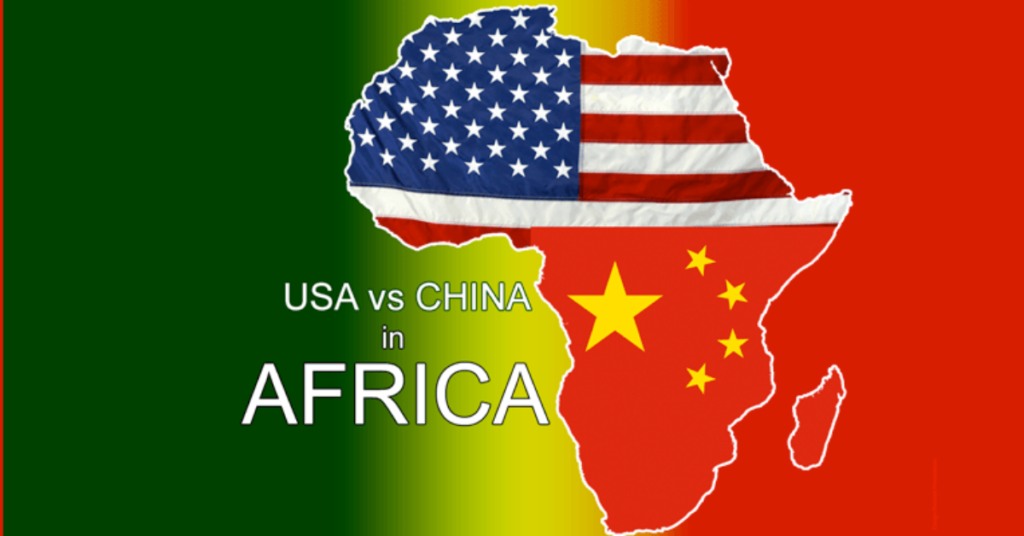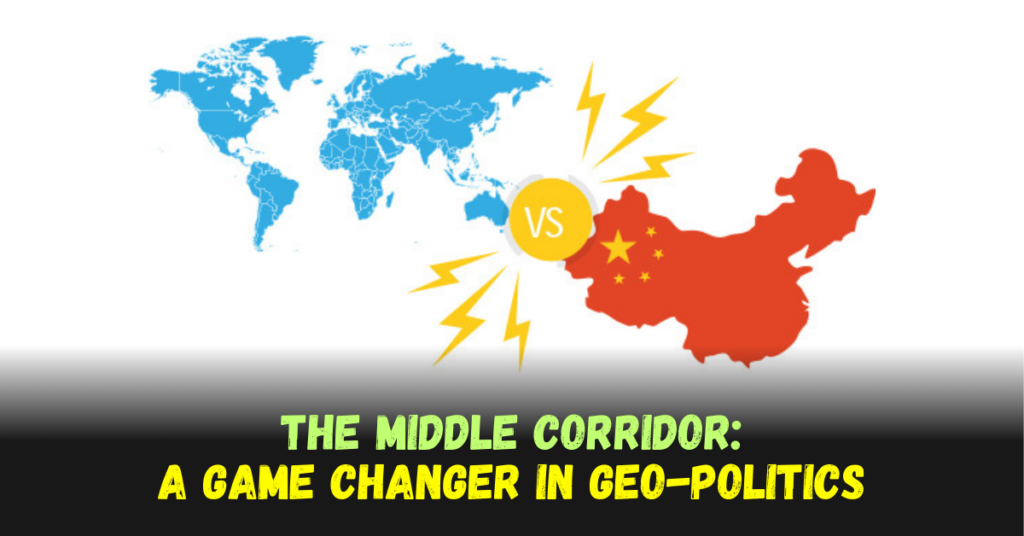The Earth’s frozen north, the Arctic Ocean, is undergoing a dramatic transformation. Rising temperatures are rapidly melting the once impenetrable ice cap, revealing a region brimming with untapped resources and strategic opportunities. This has sparked a scramble among nations, with major powers vying for dominance in a new geopolitical hotspot.

Arctic Ocean: A History of Cooperation and Change
The Arctic wasn’t always a potential battleground. Traditionally, the eight Arctic Circle nations – Canada, Denmark (through Greenland), Finland, Iceland, Norway, Russia, Sweden, and the United States – cooperated through the Arctic Council. This intergovernmental forum established in 1996 focused on sustainable development and environmental protection in the Arctic. However, recent events, particularly the Russia-Ukraine conflict, have strained these relationships.
The Allure of the Arctic: Resources and Trade
The melting Arctic unlocks a treasure trove of natural resources, making it a highly attractive region. Estimates suggest the Arctic Ocean holds a staggering 22% of the world’s undiscovered oil and gas reserves. These vast hydrocarbon deposits, along with rich mineral deposits of gold, diamonds, and rare earth elements, represent a significant economic incentive for resource-hungry nations.
Beyond Resources: The Strategic Importance of the Arctic
The melting ice also opens new maritime trade routes. The Northwest Passage, connecting the Atlantic and Pacific Oceans via the Canadian Arctic Archipelago, and the Northeast Passage, linking the Atlantic and Pacific Oceans north of Russia, offer shorter routes for shipping between continents, potentially revolutionizing global trade. This could disrupt established routes reliant on chokepoints like the Suez Canal, impacting economies worldwide. The Arctic also holds strategic military significance. Shorter routes for submarines and the potential for new military bases make the region a prime location for asserting dominance.
See More: China Economic Slowdown: Ripples Across the Globe
The Players in the Arctic Game: National Interests and Strategies
Eight nations border the Arctic Circle, each with its own interests and strategies:
- Russia: With the longest Arctic coastline (over 34,000 kilometers), Russia considers itself a dominant player in the region. It has been actively building military bases and deploying advanced nuclear icebreakers capable of navigating year-round. Russia even attempted to claim ownership of the entire Arctic seabed in 2007 by planting a flag on the seabed floor.
- United States: Seeing Russia’s advancements, the US is bolstering its Arctic presence. The US Coast Guard is increasing its fleet of icebreakers, and the US Air Force is deploying fighter jets to Alaska. The US is also collaborating with NATO allies like Canada and Norway to counter Russia’s influence.
- Canada: Canada has a long history of Arctic exploration and research. It claims the Northwest Passage as its internal waters, which has created tensions with the US in the past. Canada is investing in infrastructure development and scientific research to solidify its claim to the Arctic.
- Denmark (through Greenland): Greenland, the world’s largest island, is an autonomous territory of Denmark. While rich in resources, Greenland faces unique challenges due to its harsh climate and small population. It’s seeking to develop its own Arctic strategy and secure a larger share of potential resource wealth.
- Finland, Iceland, Norway, and Sweden: These Nordic nations are all members of the European Union and NATO. They share concerns about Russia’s military buildup in the Arctic and advocate for a rules-based approach to governance in the region. They are also actively involved in Arctic research and sustainable development initiatives.
China: A New Player in the Arctic Arena
Though not an Arctic nation, China is a close ally of Russia and has strategic interests in securing alternative trade routes through the Arctic. China’s Belt and Road Initiative (BRI) aims to develop infrastructure and economic ties across Eurasia. Securing access to Arctic trade routes would be a major win for the BRI. China has also invested heavily in Arctic research and is actively participating in Arctic Council observer programs.
The Rise of a New Cold War: Are We Headed for Conflict?
The competition for resources and influence in the Arctic is intensifying, raising concerns of a new Cold War emerging in the region. Here are some key factors fueling these concerns:
- Military Buildup: The increased military presence of Russia and the US in the Arctic raises the risk of accidental clashes or miscalculations.
- Resource Nationalism: Nations are increasingly prioritizing securing their own access to Arctic resources, potentially leading to disputes over resource extraction rights.
- Disrupted Cooperation: The breakdown of cooperation within the Arctic Council due to geopolitical tensions could hinder efforts to address shared challenges like climate change and environmental protection.
The Path Towards Cooperation: A More Sustainable Future for the Arctic
Collaboration remains a viable alternative to conflict. Here are some ways international cooperation can ensure a peaceful and sustainable future for the Arctic.
Strengthening the Arctic Council and Beyond: A Path Towards Cooperation
- Strengthening the Arctic Council: Reviving the Arctic Council as a platform for dialogue and cooperation between nations is crucial. This requires addressing underlying geopolitical tensions and finding common ground on issues like resource development, environmental protection, and scientific research.
- Establishing Rules and Regulations: A clear legal framework governing resource exploration, shipping regulations, and environmental protection is essential to prevent disputes and ensure a sustainable approach to Arctic development. International treaties and agreements can help achieve this.
- Investing in Joint Scientific Research: Collaboration on scientific research is vital for understanding the changing Arctic environment and its global impact. Joint research projects can foster trust and cooperation between nations.
- Indigenous Rights and Traditional Knowledge: The Arctic is home to indigenous communities who have inhabited the region for millennia. Their rights, knowledge, and traditional ways of life must be respected and incorporated into decision-making processes concerning the Arctic’s future.
- Focus on Environmental Protection: The Arctic is a fragile ecosystem already under immense pressure from climate change. Collaborative efforts are needed to mitigate the effects of climate change, protect biodiversity, and ensure responsible resource development.
See More: Citizenship Amendment Act (CAA): India’s Response to International Criticism
India’s Role in the Evolving Arctic
India, as an observer member of the Arctic Council, plays a crucial role in maintaining scientific research and environmental focus in the region. India operates a research station, Himadri, and an underwater observatory, Samudra, in the Arctic, demonstrating its commitment to peaceful exploration. As a major energy importer, India has a vested interest in the Arctic’s resources, but it can strive for a balanced approach that prioritizes both resource security and environmental protection. India’s focus on clean energy technologies and its expertise in sustainable development can be valuable assets in shaping the future of the Arctic.
The Future of the Arctic: A Crossroads of Opportunity and Challenge
The melting Arctic presents a complex geopolitical challenge. Will it become a new battleground for resource control, or can nations work together to ensure a peaceful and sustainable future for the region? The answer will have a significant impact on the global landscape for decades to come. Here are some additional factors to consider:
- The Impact of Climate Change: Climate change is a major threat to the Arctic environment. Melting sea ice, rising sea levels, and permafrost thaw threaten coastal communities, ecosystems, and infrastructure. Addressing climate change requires a global effort, with Arctic nations playing a crucial role.
- The Rise of New Technologies: Advancements in technology, such as autonomous ships and deep-sea mining techniques, will create new opportunities and challenges for resource exploration in the Arctic. International regulations are needed to ensure these technologies are used responsibly.
- The Role of Non-State Actors: Non-state actors, such as NGOs, environmental groups, and private companies, can play a significant role in shaping the future of the Arctic. Their involvement in policy discussions and initiatives can bring valuable expertise and diverse perspectives.
Conclusion
The race for resources in the Arctic has the potential to escalate into a geopolitical conflict. However, collaboration remains a viable alternative. By strengthening international cooperation, establishing clear rules and regulations, and prioritizing scientific research and environmental protection, the Arctic can become a region of peace, prosperity, and sustainable development for all stakeholders. The choices made today will determine whether the Arctic becomes a new battleground or a beacon of responsible global cooperation for the benefit of future generations.
Call to Action
The future of the Arctic is in our hands. By raising awareness about the challenges and opportunities in the region, we can encourage dialogue and promote responsible practices for a sustainable Arctic.
Thanks for Visiting Us In Focus!
For DMCA complaints, please visit our DMCA Form / Report Content
Follow us on other platforms as follows:
Facebook – https://www.facebook.com/usinfocus
X (formerly Twitter) – https://twitter.com/usinfocusdotcom


